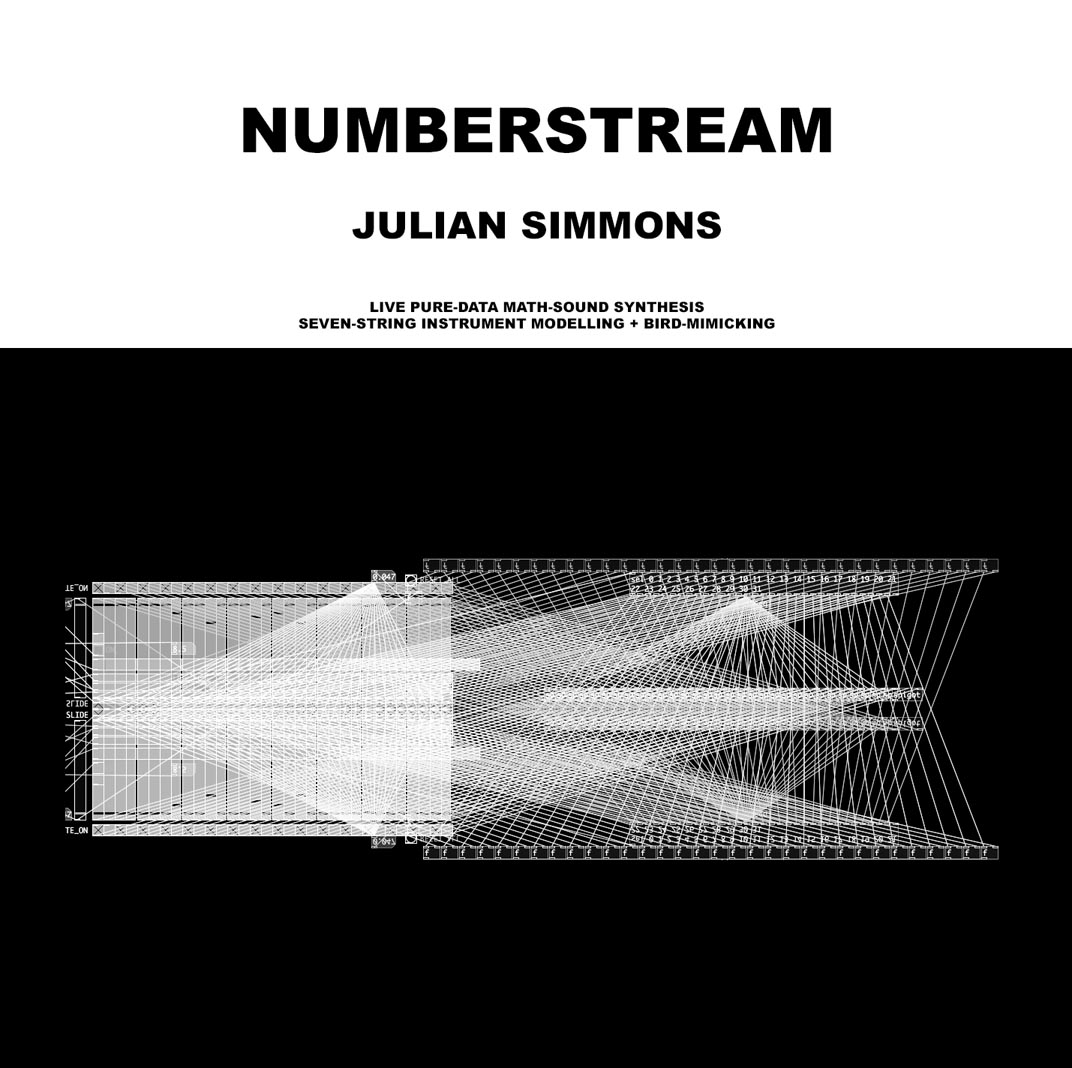This CD presents direct-take recordings of multiple Pure-Data NUMBERSTREAMS played in real-time by modifying embedded variables; the two-track files were saved live within PD as the final output; no samples of actual instruments, field recordings, MIDI, or post-mixing employed.
Each piece played experimentally according to a score containing brief instructions with open time periods, varying to the performance situation.
1 SNAPE | THE SLIDER
2 ORFORD | PAGODA LAB
3 OSLO | LO SO SO LO
4 NUZ | SPIRIT OF EWE
1 SNAPE | The Slider 1 17:40 [excerpt 6:45-13:55]
4 NUZ | Spirit of Ewe 4 8:32 [excerpt 3:42-7:24]
‘It belongs to the sui generis genre; and it’s emergent : wikipedia’, Angus Cook.
“It’s like finding yourself outside at night… in front of the heavens… and the whole of reality drops away”, Sarah Lucas [commenting on SNAPE | THE SLIDER].
Signed CDR, self-released. Total time 70:00. Recorded Sept 2011.
Download > THE SLIDER (2 variations) + NUZ (variation)
SNAPE | THE SLIDER and NUZ | SPIRIT OF EWE first live performance :
Aldeburgh Music, Snape Maltings, Hoffmann Building, Suffolk, UK / 10 June 2011 [details here after SEE MORE > ]
All tracks alongside ‘Coloured Rose’ – light-sculpture by Cerith Wyn Evans exhibited :
Stolper + Friends, Tjuvholmen Alle 6, 0252 Oslo, Norway / October 2011. Track 3 was composed especially for this exhibition.
Expansions of SNAPE | THE SLIDER and NUZ | SPIRIT OF EWE performed live quadraphonically :
Ekeberg Sculpture Park, Oslo, Norway / 30 April 2016
Albergo Diurno Venezia, piazza Oberdan, Milan, Italy / 9 – 10 April 2016
Cafe OTO, 18–22 Ashwin street, Dalston, London, UK / 6 November 2015
Whitechapel Gallery, 77-82 Whitechapel High St, London, UK / 28 November 2013
The instrument created and played on tracks 1 – 3 consists of seven equally tuned ‘strings’ that are played in a continuous sweep offering six possible temporal intervals – the first two strings if both selected are triggered together, such that the following patterns may be played –
(1+2, 3, 4, 5, 6, 7, #) ; (1, _, 3, _, _, _, _, #) ; (_, _, 3, 4, _, _, 7, #) etc; ‘#’ variable interval after string 7 introduces a refrain between repeating sweeps.
Equally tuned strings enable close harmonics, resonances and frequency-beating / interference to be more quickly explored, and be free of a set scale. As a result the instrument is never in or out of tune with a scale – as all frequencies including those that are dissonant are continuously and equally available to each string.
Any of the seven strings may be manually added or removed from these sets in real-time, as can be heard in the initial section of track 1. This is one of two main approaches to playing the instrument, the other is modifying how the numberstream generates the core sound. Essentially rather than composing with existing pre-sampled or predictable oscillatory electronic sounds, the numberstream creates the actual sound vibration through a rapid burst of random-numbers – that relate not to ‘notes’ but to the textural movement of air required to produce sound.
The length of this random-number burst, captured every time a string-event occurs, is modified by finely gradated vertical sliders – the instrument’s neck. The repetition of this burst creates frequency, such that when its length is reduced or extended a pitch glissando is produced. Heard first in track 1 at 2:30 the sliding range stretches from that of a violin, continuously down to that of a contrabass.
The vibrational duration of the strings can also be manipulated – the extent to which the instrument evens-out the initially harsh random-number packet over time.
Another variable is the extent to which the string material is coloured – reducing the chaos within the initial number burst. In effect at a waveform level, forming areas of perfect flat amplitude (no vibration) interspersed with areas of noisy texture; the results ranging from least coloured metallic sounds to warmer timbres generated by materials such as wood.
The resonant size of the instrument’s body – which again can be modified in real time, is a technique employed in the low-pitch piano-like sounds in the first half of track 3. The resonance greatly extended after each note strike, enabling notes to be generated in a small dry or non-reflective space and then enter a larger reverberant space.
The strings are mapped within the stereo-field : strings 1+2, 3 and 4 to the left; 5, 6 and 7 to the right; such that individual strings become identifiable within space as instruments in their own right.
The instruments played in track 4 were created in Wakatipu, South Island, New Zealand; a square-wave FM instrument inspired by the bizarre up-down bird whistle calls, and a noise-instrument matching the incessant cicadas.
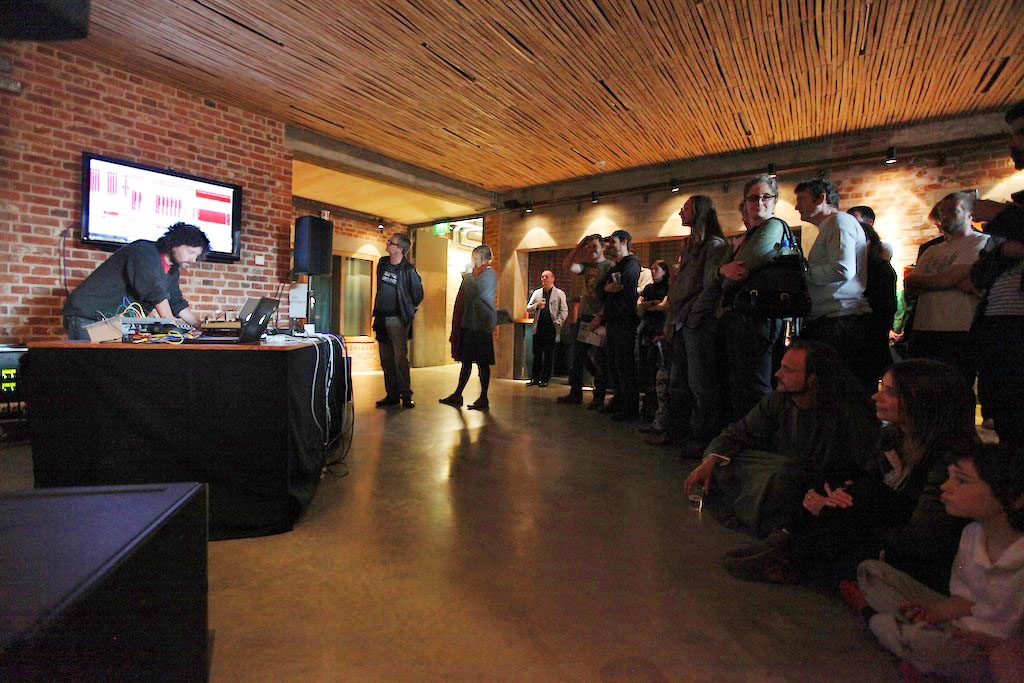 |
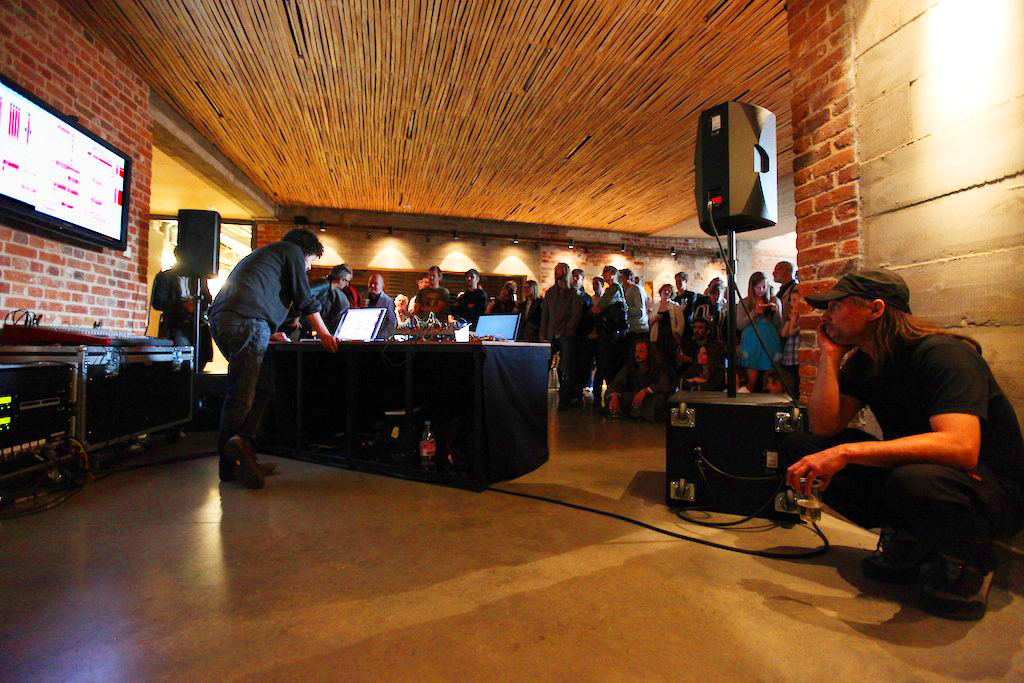 |
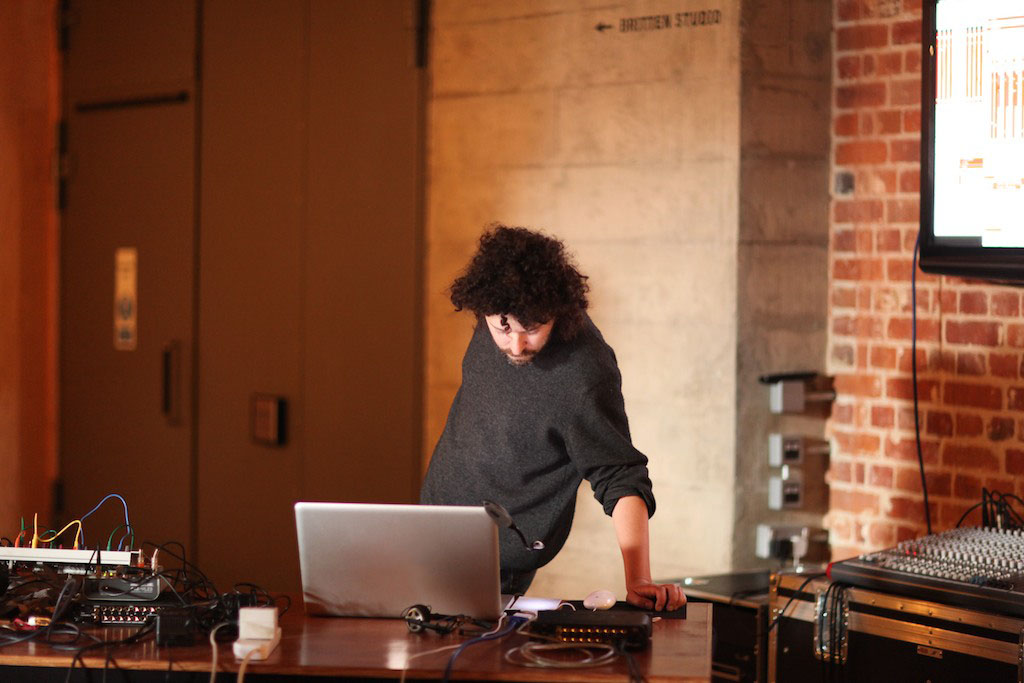 |
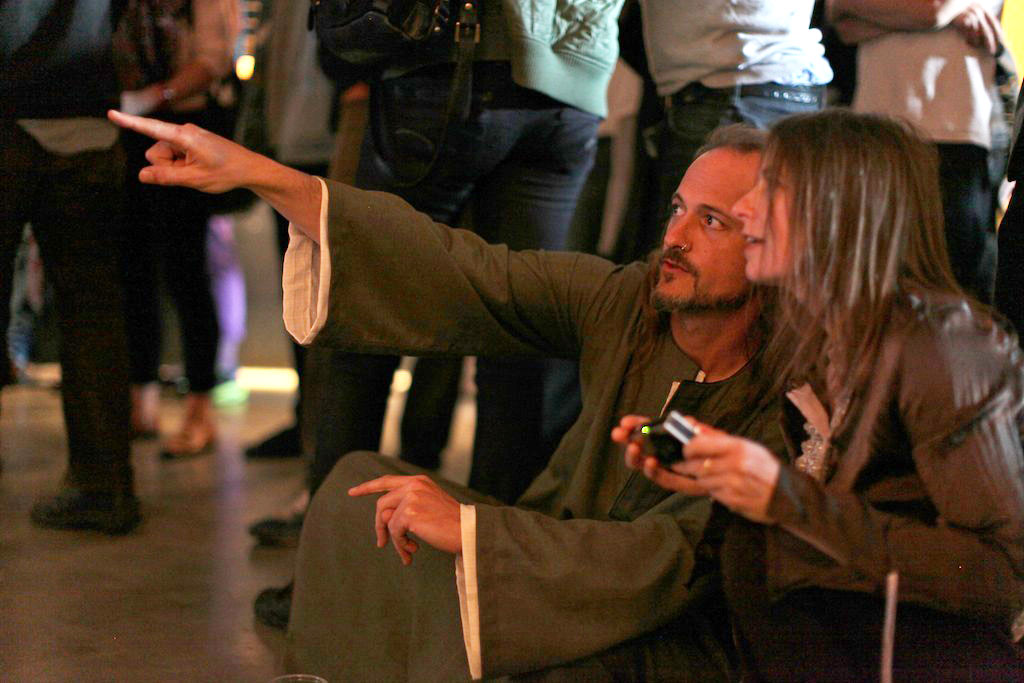 |
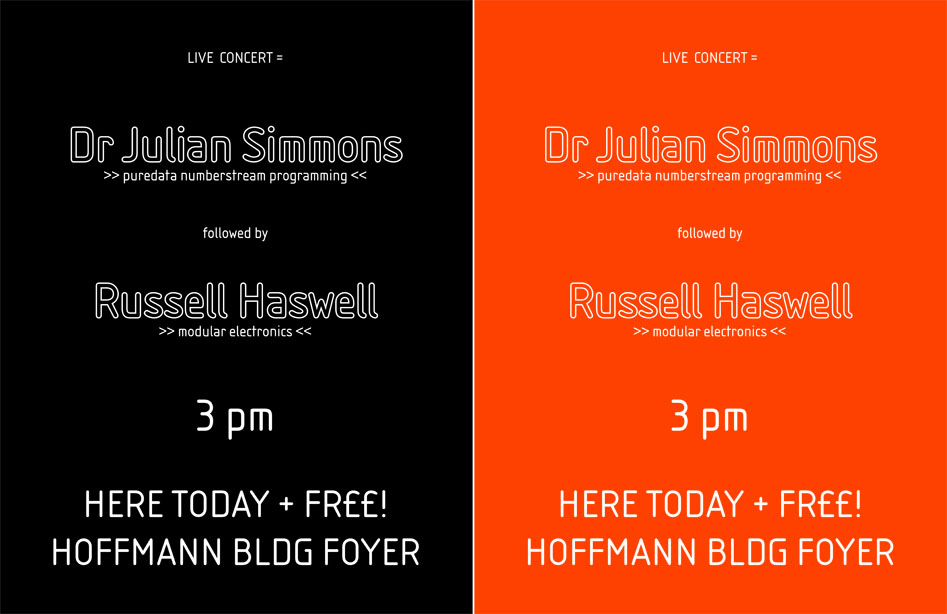
Tracks 1 and 4 also here: soundtrack at 1:55-6:34 [except percussion 3:50-4:28]; introduced by Michael Craig-Martin:
Further details of SNAP 2011:
http://www.snapaldeburgh.co.uk/2011/exhibition2011.htm
